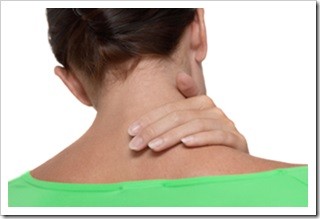 A research study recently published in Medical and Biological Engineering and Computing adds to the medical and scientific communities’ understanding of auto related neck injuries (1). Insurance companies have long argued that low impact automobile collisions do not produce sufficient force to cause serious injury. This is patently untrue. As health care practitioners, we have met people who totaled their cars and walked away uninjured, and we have examined patients suffering serious injury after little more than bending their fenders. Multiple variables contribute to the extent of injury.
A research study recently published in Medical and Biological Engineering and Computing adds to the medical and scientific communities’ understanding of auto related neck injuries (1). Insurance companies have long argued that low impact automobile collisions do not produce sufficient force to cause serious injury. This is patently untrue. As health care practitioners, we have met people who totaled their cars and walked away uninjured, and we have examined patients suffering serious injury after little more than bending their fenders. Multiple variables contribute to the extent of injury.
One of the known variables is head rotation at time of impact. Attorneys should be in the habit of asking injured parties exactly what they were doing and where they were looking just before the collision. In 1994, a group of Swiss researchers found that people who had their heads turned during impact had more serious and long-lasting neck injuries, (2) but the exact mechanism of that increased risk had not been proven. Twelve years later, researchers performed crash simulations on cadavers. (3,4) They confirmed one of the top theories – that neck rotation increased the risk of compression of the spinal nerve ganglion. Those researchers also theorized that head rotation would also preload and make more susceptible to injury the facet joint capsular ligament. Injury to this ligament would lead to additional pain, instability, and ongoing damage to the ganglion.
Earlier this year, Steven Storvik (Department of Neurosurgery, Medical College of Wisconsin) and Brian Stemper (Department of Biomedical Engineering, Marquette University), used engineering computational models to prove that head rotation during rear impact also increases the risk of facet joint injury.(1) Facet joints on the same side of head rotation (ipsilateral) are those at greater risk. Rotation of 60° can nearly double strain magnitude on the facet joint capsular ligament. Their findings are consistent with those of Gunter Siegmund and colleagues (2008) who performed crash simulations on cadavers.(5)
We can now state, with solid scientific backing, that people who had their head turned during a rear collision experience greater morbidity due to the increased impact on the spinal nerve ganglion and increased stress on the facet joint. At Care Medical Center, physicians always record each patient’s reported activities and body position as part of an auto accident history. Not only will that give us clues as to exactly which structures may be injured, it may help to explain the extent of injuries to any third parties.
References
1. Storvik S, Stemper B. Axial head rotation increases facet joint capsular ligament strains in automotive rear impact. Med Biol Eng Comput. 2011; 49: 153-161.
2. Sturzenegger M, DiStefano G, Radanov B, Schnidrig A. Presenting symptoms and signs after whiplash injury: the influence of accident mechanisms. Neurology 1994; 44: 688-693.
3. Tominaga Y, Maak T, Ivancic P, et al. Head-turned rear impact causing dynamic cervical intervetebral foramen narrowing: implications for ganglion and nerve root injury. Journal of Neurosurgery: Spine 2006; 4: 380-387.
4. Panjabi M, Maak T, Ivancic P, Shigeki I. Dynamic intervertebral foramen narrowing during simulated rear impact. Spine. March 2006; 31 (5): E128-124.
5. Siegmund G, Davis M, Quinn K, et al. Head-turned postures increase the risk of cervical facet capsule injury during whiplash. Spine. 2008; 33 (15): 1643-1649. ©BMA
For Your Health,
Dr. Ryan Moorman

 A
A